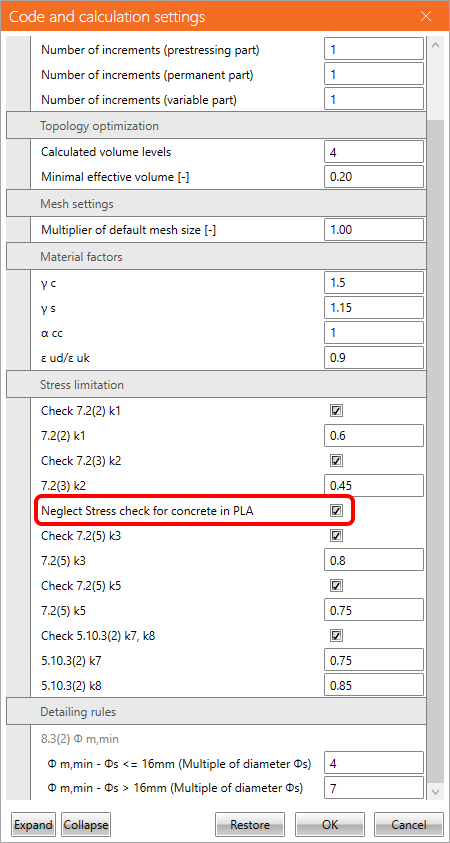SLS checks of prestressed concrete discontinuity regions
Since version 22.1, you can get complete results on a prestressed concrete element not only for ultimate limit state check but also for all serviceable limit state checks, such as stress limitation, crack width, and, last but not least, deflection code-check.
The only thing you need to do is to set characteristic and quasi-permanent combinations for the serviceable limit state checks. The application will do the rest automatically, and you will receive corresponding results. Just like you are used to doing it in modeling the reinforced concrete element.
Stress limitation check
The stress limitation check is done automatically for concrete, reinforcement, and prestressing tendons. The tendon check is done according to Eurocode (EN) for the characteristic combination.
When modeling post-tensioned tendons, it is possible to turn on the possibility of having a partially loaded area at the anchoring zone. In that case, according to Eurocode, you can neglect the concrete check in the above support area from the stress limitation check.
Crack width check
Since version 22.1, the calculation of the crack width for prestressed elements has been extended with the decompression check. The main assumption is that every modeled tendon is in the compressed area of the concrete. When concrete embedding the tendon is in tension, the tendon is presented with a red (orange) color in a 2D scene. Also, the nonconformity warning with extreme strain value is shown in the summary results table.
For all of the SLS checks mentioned above, the input of two different creep coefficients has been implemented. The creep coefficient is defined by the user in the Materials and constitutive model table in concrete grade properties. It is possible to define the creep coefficient for prestressing and self-weight and for superimposed dead load separately. The input is then used for evaluating the long-term effects.
Available in the Enhanced edition of IDEA StatiCa Prestressing.








